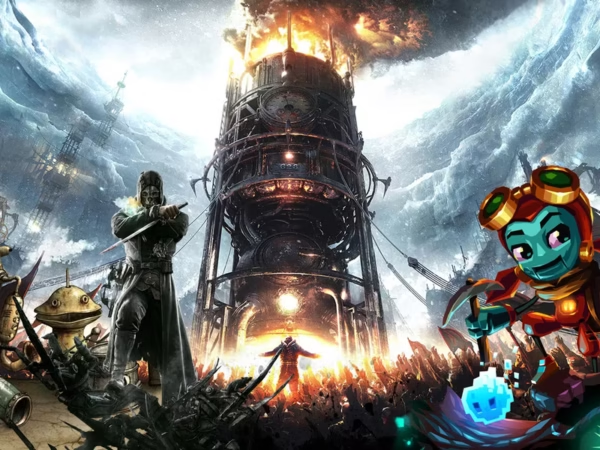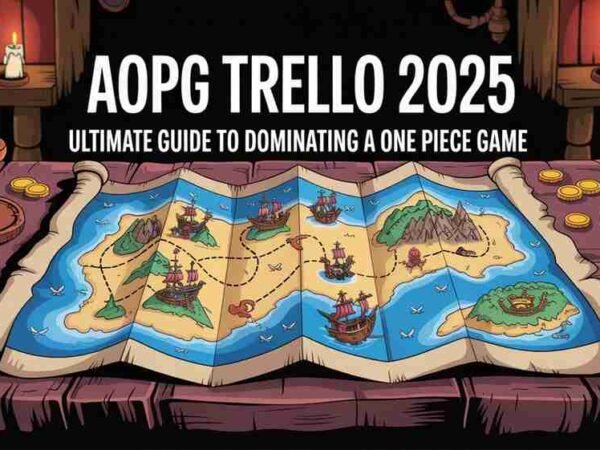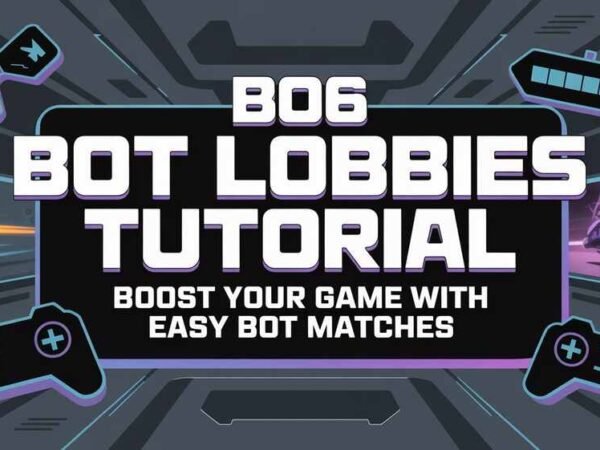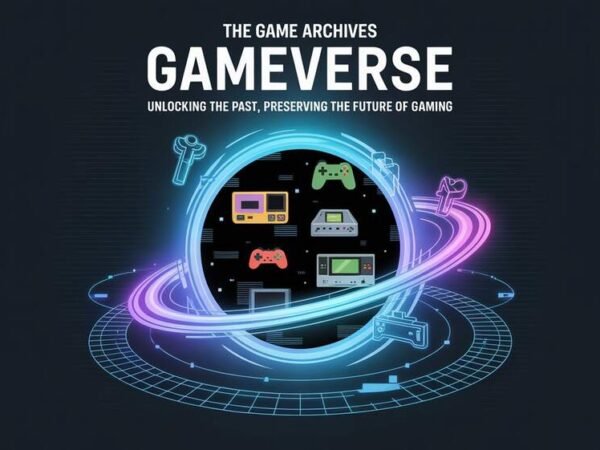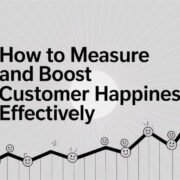FiveM has rapidly become one of the most popular platforms for creating custom multiplayer experiences within the GTA V universe. One of the reasons behind its success is the ability of developers and enthusiasts to design unique and immersive worlds through custom map creation. Whether you’re a seasoned map developer or just getting started, creating maps for FiveM is an exciting challenge combining creativity and technical know-how.
In this guide, we’ll delve into the essential aspects of designing custom maps in FiveM, from the planning phase to the execution, while covering important tools, techniques, and best practices to help you craft immersive worlds. Whether designing a small neighborhood or a sprawling cityscape, this guide will equip you with the knowledge to create standout maps fivem.
Introduction to FiveM Map Creation
FiveM is a modification framework that allows users to create customized multiplayer experiences within the GTA V environment. One of its standout features is the ability to design custom maps. These maps can serve various purposes, from roleplaying scenarios to large-scale racing events. Custom maps allow server owners to tailor their worlds to suit specific gameplay mechanics and themes, thus enhancing the player’s experience.
However, creating custom maps for FiveM involves more than just placing buildings or vehicles. A well-designed map balances aesthetic appeal with functional game mechanics, allowing players to explore and engage with the world meaningfully. A good map can elevate gameplay, making every corner of the virtual world feel alive and interactive.
Creating maps for FiveM typically involves several key stages: planning, designing, testing, and optimizing. Each stage requires different tools and skills, and skipping any of them can result in a map that looks good but fails to perform or engage players.
Planning Your Custom Map
Before jumping into the design phase, it’s crucial to have a solid plan for your map. Planning will ensure that your final product aligns with your goals and provides the best possible experience for players.
Define Your Map’s Purpose
The first step in creating a custom map is defining its purpose. Ask yourself the following questions:
- What is the primary gameplay mode? (Roleplay, racing, combat, exploration, etc.)
- What types of players are going to interact with this map?
- How will players navigate through the space?
Answering these questions will help shape your design decisions. For example, a map designed for roleplay might focus on intricate interior designs and detailed environments. In contrast, a racing map might prioritize smooth roads and wide, open spaces for vehicles to speed through.
Sketching Your Layout
Once you’ve defined your map’s purpose, it’s time to sketch out a rough layout. This doesn’t have to be a detailed drawing, but having a basic visual guide of where key landmarks, roads, and areas of interest will streamline the design process. Use a top-down view to mark potential zones such as urban areas, forests, or industrial districts. It’s essential to consider the scale at this stage. Ensure the map is appropriately sized for the number of players you anticipate.
Tools and Software for Map Design
Creating custom maps for FiveM requires a combination of different tools. Below are some of the most popular software options used by the community.
CodeWalker
CodeWalker is a powerful 3D map editor for GTA V, widely used by modders to explore and modify the game’s world. It offers robust features, including adding, removing, or repositioning objects within the game world. You can edit terrain, add textures, and work with lighting effects. The real-time rendering feature allows you to visualize your map as you create it, making it easier to make adjustments.
OpenIV
OpenIV is another essential tool for map creators. This modding tool enables you to access and modify the game’s files. Although it’s primarily known for its use in creating mods, OpenIV can also import custom assets into your map. You can tweak everything from textures to vehicle models, ensuring your custom map looks exactly how you envision it.
Map Editor & Menyoo
Both Map Editor and Menyoo are mods that provide in-game map creation tools. These mods are great for beginners as they offer a simple interface to place objects and create basic maps directly within the game. They may not be as powerful as CodeWalker, but they’re perfect for quick edits or smaller-scale projects.
Blender (for Custom Models)
Blender is an excellent choice if you want to create custom models for your FiveM map. This free 3D modeling software allows you to design and import custom buildings, objects, or vehicles, adding a unique touch to your map. Once ready, your models can be imported into FiveM using OpenIV.
Best Practices for Immersive Map Design
Immersion is key when designing a custom map for FiveM. Players should feel like they’re stepping into a fully realized world where every detail serves a purpose. Here are some best practices to help you create immersive and engaging maps.
Attention to Detail
Small details can make a huge difference in the player experience. Whether it’s scattered debris, graffiti on walls, or realistic street signs, attention to detail can transform a basic environment into a believable world. However, be mindful not to overdo it. Excessive objects can lead to performance issues, so balance is critical.
Natural Flow and Navigation
Good map design ensures players can easily navigate the space without feeling lost or frustrated. Think about how players will move from one area to another and how you can guide them with natural visual cues like pathways, signage, or distinct landmarks. This is especially important for large maps, where players may need to orient themselves quickly.
Sound Design and Atmosphere
While many map designers focus heavily on visuals, sound is another key element that significantly enhances immersion. Incorporating ambient sounds, like the hum of city traffic or the rustling of leaves in a forest, can elevate the player’s experience and make the world feel more alive.
Interactive Elements
Consider adding interactive elements to your map. Interruptive features, such as doors that open, lifts that move, or objects that players can manipulate, can make your map feel dynamic and engaging.
Testing and Optimization
Once your map is designed, the next step is testing. Testing ensures that the map functions correctly and is optimized for performance.
Test with Different Player Counts
Test your map with different numbers of players to ensure that it performs well under various conditions. For example, a map designed for roleplay might feel too empty with only a few players, while a racing map might become chaotic with too many.
Check for Bugs and Glitches
Walk through your map multiple times to check for bugs or glitches, such as floating objects, texture issues, or collision problems. These can break immersion and detract from the player experience.
Optimize for Performance
One of the most common issues with custom maps FiveM is performance. Large maps with many objects can cause framerate drops, especially on lower-end systems. To prevent this, ensure that your map is optimized by:
- Limiting the number of unnecessary objects.
- Reducing the complexity of custom models.
- Using LODs (Level of Detail) for distant objects.
Advanced Techniques for Map Customization
Once you’ve mastered map design basics, you may want to explore more advanced techniques to set your maps apart. These methods will help you push the boundaries of what’s possible in FiveM map creation.
Custom Textures
Creating custom textures can add a unique aesthetic to your map. Tools like Photoshop or GIMP can be used to design textures that match the theme of your map. For example, you might create custom business signage or road markings to guide players.
Custom Scripts
By integrating custom scripts into your map, you can create dynamic gameplay experiences. Scripts can control everything from NPC behavior to weather patterns. For example, you might use a script to trigger an event when players reach a specific location on the map, adding a narrative element to the environment.
Multi-Layered Environments
If you’re designing a large, complex map, consider incorporating multi-layered environments. These could include underground areas, multi-level buildings, or even underwater spaces. Creating verticality in your map design adds depth and exploration for players.
Conclusion
Designing custom maps for FiveM is a rewarding process that allows you to craft unique and immersive worlds. Whether creating small maps for personal use or developing larger projects for the community, mastering the tools and techniques will enable you to bring your creative visions to life.
The most successful maps are thoughtfully planned, designed with immersion in mind, and optimized for performance. By following the steps outlined in this guide, you’ll be well on your way to creating memorable maps for FiveM that offer engaging experiences for players. Keep experimenting, stay creative, and don’t forget to have fun with the process!
Do Read: The Most Iconic Champions in the History of League of Legends



